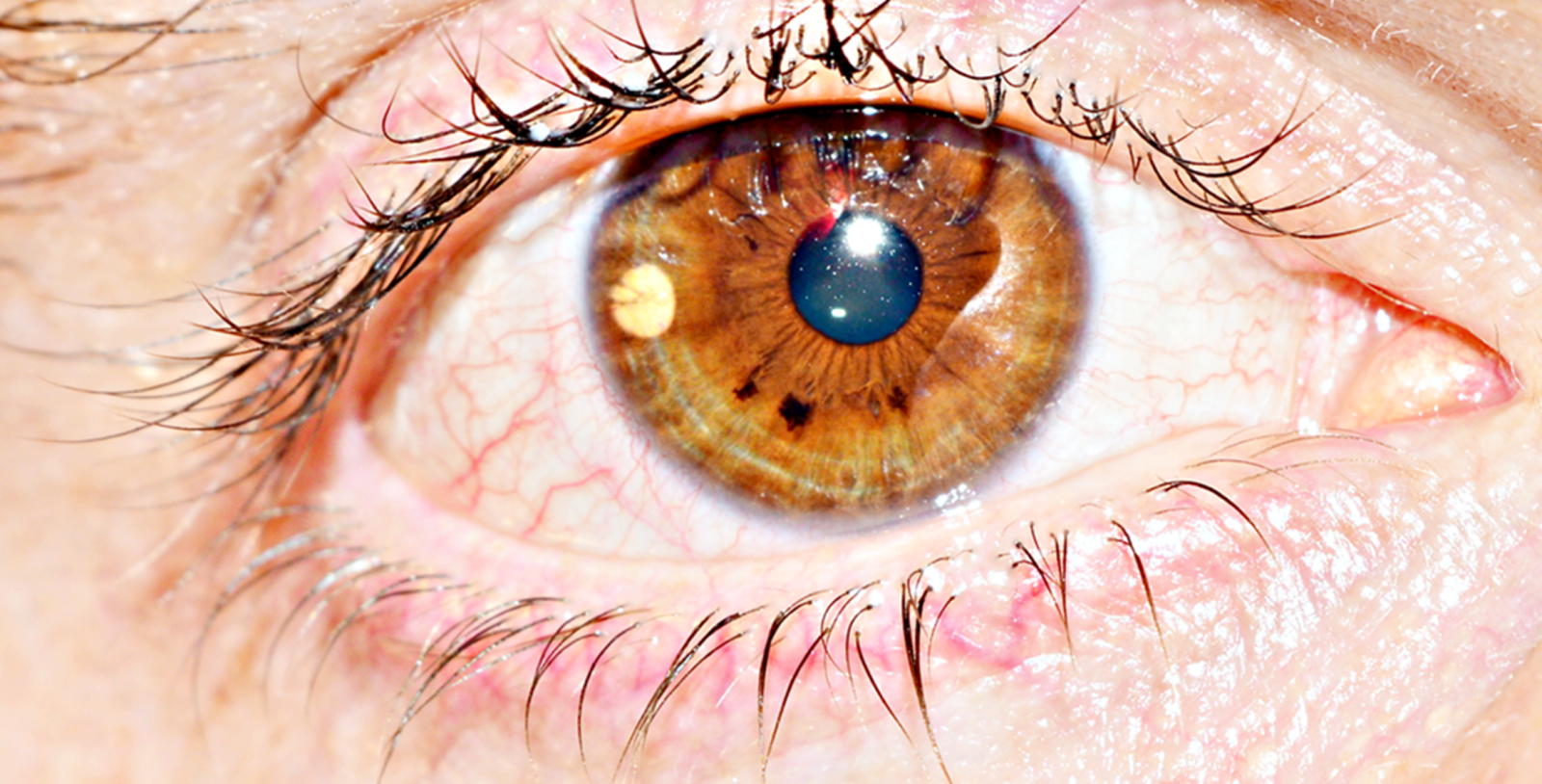Rare Childhood Cancer Strikes the Retina: Discover the Latest on Retinoblastoma
This article offers an in-depth exploration of retinoblastoma, a rare childhood cancer affecting the retina. We delve into its scientific underpinnings, genetic influences, and early symptoms. The importance of regular check-ups for timely detection and the available treatments are discussed. Additionally, we provide insights on coping mechanisms for families and share inspiring survivor stories. Our aim is to equip readers with comprehensive knowledge about retinoblastoma and the resources available for individuals impacted by it.

Key Takeaways
- Early detection and genetic counseling are crucial in managing retinoblastoma.
- Advancements in retinoblastoma research have improved prognosis and survival rates.
- Pioneering techniques in imaging and targeted therapies are being explored for retinoblastoma treatment.
- Early diagnosis, genetic screening, and public awareness are key in preventing vision loss caused by retinoblastoma.
Understanding Retinoblastoma: A Brief Overview
Retinoblastoma, an abstract manifestation of malignant cells in the retina, predominantly affects children and contributes to a rare but significant portion of pediatric cancers. Preventing retinoblastoma remains a focal point of medical research, with early detection and genetic counselling playing vital roles. The advancements in retinoblastoma research have significantly improved the prognosis and survival rates, while minimizing the collateral damage to vision. Pioneering techniques in imaging and targeted therapies are continually being explored and refined. However, the key to mitigating this disease lies in early diagnosis, genetic screening for at-risk families, and public awareness about its symptoms. The challenge remains to bridge the gap between scientific discovery and practical implementation, to ensure that no child loses their sight to retinoblastoma.
Incidence and Prevalence of Retinoblastoma
The global incidence and prevalence of this rare ocular malignancy provide critical insights into the overall impact of retinoblastoma on pediatric health. It is estimated that the incidence of retinoblastoma is about 1 in every 20,000 live births worldwide, with approximately 9,000 new cases diagnosed annually. This equates to roughly 4% of all pediatric malignancies. The prevalence of retinoblastoma is slightly higher in developing countries due to genetic predispositions and risk factors for retinoblastoma, such as familial history and parental age at conception. In developed countries, early detection and advanced treatment options have significantly reduced mortality rates. However, the disease remains a major challenge in regions with limited healthcare resources, emphasizing the need for global efforts in prevention and management strategies.
The Science Behind Retinoblastoma
In order to fully grasp the scope of retinoblastoma, we need to delve into the scientific aspects of the disease, and understand the genetic and molecular mechanisms involved in its onset and progression. Retinoblastoma stems from the mutation in the RB1 gene, a tumor suppressor gene, which forms the genetic basis of retinoblastoma. The mutation can be inherited or occur spontaneously, leading to uncontrolled cell growth in the retina. Advancements in retinoblastoma research have led to the development of more targeted therapies, reducing the need for enucleation. Biotechnologies like gene therapy are being explored, aiming at restoring the function of the mutated RB1 gene. Decoding the science behind retinoblastoma is crucial for early detection, effective treatment, and improving patient survival rates.
Genetic Influence on Retinoblastoma
As we delve deeper into the genetic components of retinoblastoma, it's crucial to understand the pivotal role that heredity and genetic mutations play in this rare form of childhood cancer. Genetic testing can provide significant insights into both the risk and potential onset of this disease. It is particularly valuable in cases of inherited retinoblastoma, which is associated with mutations in the RB1 gene. This gene, when functioning normally, plays a critical role in controlling cell growth. However, mutations can disrupt its function, leading to uncontrolled cell growth and the development of retinoblastoma. Identification of such mutations through genetic testing can guide timely intervention, potentially preventing or mitigating the disease's impact on a child's vision and overall health.
Recognizing the Early Symptoms of Retinoblastoma
Understanding the early symptoms of retinoblastoma can facilitate prompt medical intervention, potentially saving a child's vision and life. Recognizing early symptoms is crucial. These can include a white color in the pupil when light is shone into the eye, a phenomenon known as 'leukocoria'. Strabismus, or misalignment of the eyes, is another common indicator. Less frequent symptoms include redness or swelling without infection, poor vision, or different colored irises. The importance of early detection cannot be overstated. Retinoblastoma is highly treatable and often curable if diagnosed early. Regular pediatric eye exams can lead to early identification of abnormalities, allowing for immediate action and potentially improving outcomes. Awareness and vigilance are paramount in protecting children from this rare but serious condition.
Diagnostic Methods for Retinoblastoma
Through the lens of advanced medical technology and with an emphasis on early detection, various diagnostic tools are employed for the identification of Retinoblastoma, and these include imaging tests, ocular examinations, and tissue biopsies. The differential diagnosis for Retinoblastoma is performed by distinguishing it from other similar eye diseases, using advanced imaging techniques such as ultrasound, magnetic resonance imaging (MRI), and computed tomography (CT) scans. Ocular examinations are performed by pediatric ophthalmologists who examine the internal structures of the eye, particularly the retina. Tissue biopsies are less common but may be necessary when imaging results are inconclusive. All these methods are critical in diagnosing retinoblastoma, guiding treatment decisions, and promoting a better prognosis for the affected child.
Available Treatment Options for Retinoblastoma
The treatment of retinoblastoma involves an array of strategies, including chemotherapy, radiation therapy, and surgical intervention, and the choice of treatment largely depends on the size, location, and spread of the tumor. These available treatment options aim to eradicate the cancer while preserving vision. Advancements in treatment have significantly improved the prognosis for patients, with a survival rate of over 95% in developed countries. Chemotherapy can be administered systemically or directly into the eye, reducing systemic side effects. Radiation therapy is often used for larger tumors, while surgery, including enucleation or the removal of the eye, is typically reserved for advanced cases. Cryotherapy and laser therapy are also employed to destroy smaller tumors. These options provide a comprehensive approach to treating this rare childhood cancer.
The Role of Surgery in Treating Retinoblastoma
In the realm of retinoblastoma treatment, surgery plays a critical role, particularly in cases where the cancer is advanced or nonresponsive to other treatment methods. The primary aim of surgical intervention is twofold: to remove the tumor and to preserve as much vision as possible. Given the location of retinoblastoma, this is a delicate balance to strike. Surgical advancements in retinoblastoma treatment, including precision techniques and improved eye-sparing approaches, have significantly increased the chances of vision retention. These advancements have also contributed to a higher survival rate among affected children. Therefore, the role of surgery in preserving vision is pivotal and continues to evolve with ongoing research and technological advancements, offering hope for improved outcomes in the future.
Chemotherapy and Radiation Therapy for Retinoblastoma
Often utilized in the treatment of retinoblastoma, chemotherapy and radiation therapy serve as effective methods in shrinking the tumor and preventing its spread. Though these treatments have proven successful, they are not without potential side effects. Chemotherapy side effects can range from temporary ailments such as nausea or hair loss, to more long-term complications including infertility or secondary cancers. Similarly, radiation therapy, while potent against retinoblastoma, may have long term effects. These can involve developmental issues in the treated area, or an increased risk for other forms of cancer later in life. As with all treatments, the potential benefits must be weighed against these possible risks, making an individualized treatment plan essential for each patient.
Novel and Experimental Treatments for Retinoblastoma
Emerging research and clinical trials are unveiling novel treatments for retinoblastoma, and these innovative therapies range from targeted drugs to immune-based treatment strategies. Novel drug therapies are being developed with a focus on undermining the molecular pathways that cancer cells exploit to grow and proliferate. These drugs aim to halt the progression of retinoblastoma by inhibiting these pathways and inducing cell death. Concurrently, advancements in gene therapy are providing a promising horizon in the treatment landscape. By correcting the genetic anomalies that trigger the disease, gene therapy could potentially avert the onset of retinoblastoma. Alongside, immune-based strategies are being explored to bolster the body's natural defense mechanisms against cancer cells. Thus, the future of retinoblastoma treatment seems promising with these groundbreaking approaches.
The Importance of Early Detection and Regular Check-ups
Vigilance in pursuing regular eye check-ups plays a paramount role in the early detection of retinoblastoma, thereby enhancing the likelihood of successful treatment and improved prognosis. Early detection benefits are multifaceted, providing opportunities for less aggressive treatment options and a greater chance of preserving vision. The regular check-up importance should not be underestimated, as it allows for continuous monitoring of the child's ocular health, enabling swift intervention if changes are observed. Furthermore, regular check-ups can identify retinoblastoma's subtle signs, such as a white glow in the pupil or strabismus, that might be missed in day-to-day observation. In conclusion, prioritizing regular eye check-ups facilitates early detection, leading to more effective treatment plans and better long-term outcomes for retinoblastoma patients.
Living With Retinoblastoma: Tips for Parents and Caregivers
Navigating the journey of a child diagnosed with retinoblastoma can be challenging, yet manageable with the appropriate strategies and support systems in place. Embracing effective coping strategies is crucial. These may include fostering open communication about the diagnosis, involving the child in age-appropriate discussions about their condition, and seeking psychological support when needed. Regular medical follow-ups are essential to monitor the child's health status and manage any long-term effects of the disease or its treatment. It's also important to maintain a sense of normalcy and routine in the child's life, balancing care requirements with their regular activities and interests. Lastly, caregivers should also prioritize self-care, ensuring they remain emotionally and physically equipped to provide the best support to their child.
Survivor Stories: Real-Life Experiences With Retinoblastoma
Both inspiring and poignant, several survivor stories offer a unique perspective on living with retinoblastoma, and these narratives provide comfort, insight, and strength to those currently navigating a similar journey. The narratives reveal struggles, triumphs, and long term effects of the disease and its treatment.
One such story is of Ava, a five-year-old diagnosed at two. Despite losing one eye, her spirit remains unbroken. She enjoys painting and intends to become an artist.
Then there's Jake, a 30-year-old man, diagnosed at infancy. He speaks about the long term effects, including vision loss and emotional challenges. Yet, he is a successful engineer today.
These survivor stories highlight not just the fight against retinoblastoma, but also the resilience and determination to lead fulfilling lives.
Resources and Support for Families Affected by Retinoblastoma
Dealing with a retinoblastoma diagnosis can turn a family's world upside down, but various resources and supportive networks are available to help them cope and navigate through this challenging time. Support groups provide a platform for affected families to share experiences and gain insights from others going through similar situations. These communities often offer emotional comfort and practical advice on managing the disease. Further, organizations like the American Cancer Society and National Cancer Institute offer comprehensive guides on the disease, treatment options, and coping strategies. Financial assistance is also available through various programs to help families offset the high costs of treatment. Navigating through a retinoblastoma diagnosis can be daunting, but with the right resources and support, families can face this challenge with confidence.
Frequently Asked Questions
What Lifestyle Changes, if Any, Can Help Manage the Symptoms of Retinoblastoma?
To manage symptoms of retinoblastoma, no specific lifestyle changes have been definitively proven effective. However, maintaining a healthy diet may aid overall well-being. Genetic counseling is recommended for families with a history of retinoblastoma, as it aids understanding of risks and potential early detection strategies. Regular follow-ups and eye examinations are crucial. It's important to remember that each case is unique, so specific management strategies should be discussed with a healthcare professional.
Are There Any Alternative or Complementary Therapies That Can Be Used in Conjunction With Traditional Treatments for Retinoblastoma?
While traditional treatments remain primary for retinoblastoma, some alternative or complementary therapies may be utilized alongside. The efficacy of herbal remedies is currently under research, with no definitive conclusions yet. Mind-body techniques like meditation and yoga could potentially aid in managing stress and enhancing well-being during treatment. It is crucial, however, to consult with the primary care team before incorporating any such therapies to ensure they do not interfere with standard treatments.
How Does Retinoblastoma Affect a Child’s Vision in the Long Term?
Retinoblastoma can significantly impact a child's long-term vision, potentially leading to vision loss in the affected eyes. The extent of visual impairment depends on the disease stage at diagnosis and effectiveness of treatment. Post-treatment, visual rehabilitation may be necessary to assist in maximizing remaining vision. Additionally, genetic counseling can provide insights into the hereditary nature of the disease, guiding future health management. It is crucial to have regular, lifelong follow-ups to monitor for possible complications or recurrence.
Can Retinoblastoma Recur After Successful Treatment? if So, What Are the Chances?
Yes, retinoblastoma can recur even after successful treatment, particularly in children with a genetic predisposition. The chances vary depending on individual circumstances, including the extent of the initial disease and treatment received. However, ongoing advancements in treatment modalities have significantly improved survival rates. Regular follow-up examinations are crucial for early detection of recurrence and ensure timely intervention, thereby enhancing the likelihood of successful management and favourable long-term outcomes.
How Can Schools and Other Community Resources Support a Child Living With Retinoblastoma?
Schools and community resources can support a child with retinoblastoma by fostering emotional well-being and making necessary accessibility adjustments. Emotional support can be offered through counseling services or peer support groups, aiding in the child's psychological adjustment. Accessibility adjustments, such as assistive technology or modified learning plans, can accommodate vision loss or other physical challenges. Community resources can further provide information, financial assistance, and services to support the child's overall health and quality of life.
Conclusion
In conclusion, retinoblastoma, a rare childhood cancer, warrants serious attention due to its potential genetic implications. Early detection through regular check-ups plays a crucial role in successful management. Various treatment options, such as PDQ, cryosurgery, and approved drugs, offer hope. With adequate resources and support, families affected by this disease can navigate the challenges it presents. Lastly, survivor stories serve as powerful testimonials of resilience and survival in the face of retinoblastoma.

This post has been generated by AI and was not reviewed by editors. This is Not legal advice. Please consult with an attorney.




